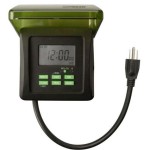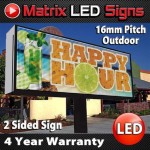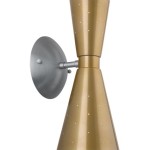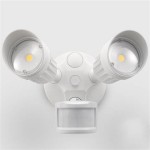Understanding IP Ratings for Outdoor Lights: Choosing the Right Protection
Outdoor lighting plays a crucial role in enhancing the aesthetics and functionality of any outdoor space. From illuminating pathways to accentuating architectural features, these fixtures endure the rigors of weather elements. To ensure their longevity and optimal performance, it's imperative to consider their ingress protection (IP) rating, a standardized system that classifies their resistance to dust and water intrusion.
IP ratings, also known as International Protection ratings, are a two-digit code that provides essential information about a product’s protection against foreign objects and water. The first digit represents the level of protection against solid objects, while the second digit indicates the level of protection against water ingress. Understanding these ratings is vital for choosing the right outdoor lights that can withstand the specific environmental conditions they will face.
Key Factors to Consider in IP Ratings for Outdoor Lights
There are several key factors to consider when interpreting IP ratings for outdoor lights:
1. Protection Against Solids
The first digit in the IP rating indicates the level of protection against solid objects entering the housing of the outdoor light. The higher the number, the greater the protection.
Here’s a breakdown of some common solid protection ratings: *
IPXX:
This rating signifies that the light fixture has no protection against solid objects. *IP0X:
This rating indicates that the light fixture offers minimal protection against solid objects, allowing the entry of large objects such as fingers. *IP1X:
The fixture protects against the entry of objects larger than 50 mm, such as a finger. *IP2X:
This rating protects against the entry of objects larger than 12 mm, such as a fingertip. *IP3X:
The fixture offers protection against the entry of objects larger than 2.5 mm, such as a small wire. *IP4X:
This rating protects against the entry of objects larger than 1 mm, such as small tools or insects. *IP5X:
The light fixture offers protection against dust and fine particles, ensuring that the light is protected from environmental dust and other fine particles. *IP6X:
This rating indicates complete protection against dust and particles, ensuring that the light is fully protected from dust, even in extremely dusty environments.2. Protection Against Water
The second digit in the IP rating represents the level of protection against water ingress. The higher the number, the greater the protection.
Here’s a breakdown of some common water protection ratings: *
IPX0:
No protection against water. *IPX1:
Protection against vertically falling water droplets. *IPX2:
Protection against dripping water. *IPX3:
Protection against spraying water up to 60 degrees from vertical. *IPX4:
Protection against splashing water from any direction. *IPX5:
Protection against water jets from a nozzle. *IPX6:
Protection against water jets from a nozzle, even when subjected to high pressure. *IPX7:
Protection against immersion in water up to 1 meter for 30 minutes. *IPX8:
Protection against continuous immersion in water at a specified depth and duration, typically defined by the manufacturer.3. Choosing the Right IP Rating for Outdoor Lights
Selecting the appropriate IP rating for outdoor lights is crucial for ensuring their durability and longevity. Here are some considerations: *
Location:
If the outdoor lighting fixture is installed in a sheltered area, such as under a porch or awning, a lower IP rating may suffice. However, for exposed areas like gardens or near swimming pools, a higher IP rating is essential. *Environment:
The local climate and weather conditions play a significant role in choosing the right IP rating. Areas with frequent rain or frequent exposure to high humidity require a higher IP rating for water protection. *Usage:
If the outdoor lights are intended for frequent use or are exposed to frequent changes in temperature, a higher IP rating is recommended to ensure optimal performance even under challenging conditions.By understanding the intricacies of IP ratings and carefully considering the factors mentioned above, you can choose outdoor lights that offer the right level of protection and enhance the beauty and functionality of your outdoor space.

What Ip Rating Do I Need For Outdoor Lights And Why It Matters Moonlight Design

What Ip Rating Is Best For Outdoor Lighting Atom

What Ip Rating Do I Need For Outdoor Lights And Why It Matters Moonlight Design

What Is Ip Rating Here Are The Simple Facts Jd Lighting

Ip Rating For Outdoor Use Lighting

Ip Rating The Definitive Guide For Led Strip Light

Everything You Need To Know About Outdoor Led Lighting

Ip Rating Chart Meteor Electrical Electical

Ip Rating Important Factor Of Led Lights Zgsm

What Ip Rating Is Best For Outdoor Lighting Atom
Related Posts







